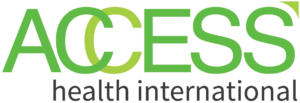
| ACCESS Health hosted the fifth session in the virtual Fintech for Health Special Interest Group (SIG) series on February 23, 2022. The Fintech for Health team in India continues to engage fintech and healthtech players to share knowledge, dialogue with each other, and catalyze the creation of new partnerships and models to support health financing for low- and moderate-income populations. With support from MetLife Foundation, ACCESS Health created the Fintech for Health platform for innovative solutions that enable low- to moderate-income people in Asia to pay for and access high-quality care using digital financial services and a financial inclusion approach.
In the fifth session, sixteen representatives from leading healthtech, fintech, payment banks, non-profit organizations, and insurance companies participated. The objective of the fifth session was to showcase digital lending solutions supporting the healthcare needs of the patients, providers, and medical equipment dealers alike. Discussions spotlighted financing solutions offered by Arogya Finance and DigiSparsh. Arogya Finance – Transforming healthcare affordability landscape for people in India Arogya Finance undertakes rapid screening and administers a psychometric test to determine the creditworthiness and risk-taking profile of the beneficiary. A decision is made and conveyed within 3 – 72 hours. If approved, care can begin immediately and Arogya Finance pays the hospital directly. The borrower repays the loan within a time frame of 3 – 36 months and this allows the family to retain assets and the patient to remain a productive member of society. The product suite consists of golden card, which offers discounts at partners and merchants services in the health and wellness sector and platinum cards providing pre-approved credit limit upto Rs. 5 lacs ($6500 USD) for all health and wellness expenditures. Arogya Card covers a family of 5 members and the beneficiary can avail 0% interest on medical loans from Arogya Finance. Arogya Finance is present in 84 cities, Arogya Card can also be used at non-partner healthcare centers. Arogya Finance relies on a partnership-driven origination and subvention model. All loans are managed on cloud-based loan origination and management system The discussion highlighted some of the key questions on the percent of people approved in the psychometric test to determine creditworthiness which is approximately 83% with only 3% default rate for repayments. People approach for loan especially those below the poverty line, for their healthcare costs through the hospitals and the pre-paid loan cards are processed through the partners of Arogya Finance. The discussion led to suggestions for Arogya Finance to possibly cater specific plans for different segments of society and provide loans to support the insurance premium DigiSparsh – Fintech Lending Solutions for the entire Value Chain of the Healthcare Ecosystem
Additionally, DigiSparsh is opening doors for Jan Dhan account holders through banking correspondents to set up self-check health kiosks for the customers and provide an outpatient teleconsultation product through those health kiosks. Unequal access to finance solutions has led to unequal access to healthcare: In India, with the low penetration of health insurance, a person spends three times the hospitalization expenses for pre and post-hospitalization expenses which are usually not covered by insurance. Sixty-three percent of the India’s total health expenditure is paid out-of-pocket as compared to the world average of just 18.2%. This Special Interest Group fifth session looked into the potential use of Fintech for Health models and how these can expand to unreached populations. Post-pandemic out-of-pocket expenses to meet medical emergencies have shot up drastically, forcing people to resort to unorganized debt markets. Digital Lending services such as Arogya Finance and DigiSparsh are some of the products that can address a small gap to reduce out-of-pocket expenditure.
Some of the questions which still need attention to really look at the viability of digital lending solutions would be to ponder over the following:
Have more to add to the conversation? Read more about the Fintech for Health program here. If you have questions or would like to work with us, please email us here. Authors: Sireesha Perabathina, Senior Consultant at ACCESS Health International For more information contact [email protected]
|


